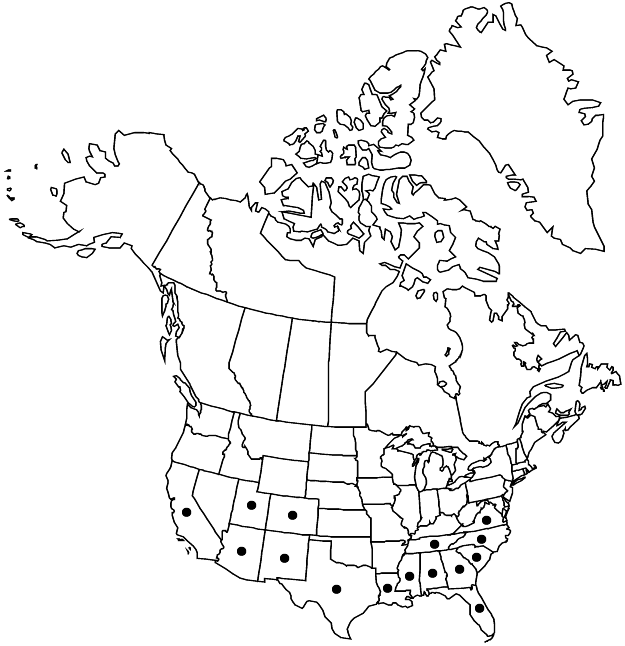Arenaria lanuginosa
in C. F. P. von Martius et al., Fl. Bras. 14(2): 274. 1872.
Plants ± strongly perennial, possibly blooming first-year, not matted. Taproots filiform to moderately thickened; rhizomes often present, slender, 2–15+ cm. Stems 1–80+, erect or ascending to procumbent or prostrate to trailing, green, 5–60 cm; internodes terete to angular, 1/3–8+ times as long as leaves, dull, retrorsely pubescent throughout or in lines, hairs minute. Leaves usually connate basally, with scarious sheath 0.1–0.5 mm, occasionally petiolate (proximal leaves) or sessile; petiole 2–5 mm; blade 1-veined, vein prominent abaxially, linear-lanceolate to narrowly elliptic or oblanceolate, 3–35 × 2–14 mm, herbaceous, margins thickened, scarious, shiny, ciliate proximally or throughout, apex obtuse or acute to apiculate, often minutely pustulate, ciliate on margins and adaxial midrib; axillary leaf clusters absent. Inflorescences axillary, solitary flowers or in proliferating, mostly terminal, leafy, 1–80+-flowered cymes. Pedicels erect to ascending (often arcuately so), or straight to widely divergent, often hooked distally in fruit, 2–40 mm, retrorsely pubescent. Flowers: sepals green, 1–3-veined, 2 lateral-veins 1/4–3/4 times as long as midvein, often appearing prominently keeled proximally, lanceolate to ovate (herbaceous portion oblong or lanceolate to ovate), 2–5 mm, to 5.5 mm in fruit, apex acute to acuminate, not pustulate, glabrous; petals narrowly spatulate to obovate, 1.5–6 mm, 1/2–12/5 times as long as sepals or absent, apex obtuse to rounded, petals sometimes absent. Capsules ± loosely to tightly enclosed by calyx, ovoid, 3–6 mm, 4/5–11/2 times as long as sepals. Seeds 8–35, black, suborbicular, slightly compressed, 0.7–0.8 mm, shiny, smooth. 2n = 40, 44.
Distribution

Ala., Ariz., Calif., Colo., Fla., Ga., La., Miss., N.C., N.Mex., S.C., Tenn., Tex., Utah, Va., Central America, South America
Discussion
Varieties 4+ (2 in the flora).
Arenaria lanuginosa is morphologically diverse, both in our area and southward into northern South America, and is in serious need of comprehensive study. Other species in subg. Leiosperma (e.g., A. gypsostrata B. L. Turner) that occur in Mexico resemble A. lanuginosa; the nature of those relationships also requires study. We have taken the “conservative approach” of treating the two taxa that occur in the flora area as varieties.
Selected References
None.
Key
| 1 | Stems often 1-10, prostrate to trailing; inflorescences of solitary, axillary flowers; petals absent or 1/ 3/ 4 times as long as sepals | Arenaria lanuginosa var. lanuginosa |
| 1 | Stems 1-80+, erect or ascending to procumbent; inflorescences of proliferating, leafy, 1-80+-flowered cymes; petals 3/ 2/ 5 times as long as sepals | Arenaria lanuginosa var. saxosa |
"/5-11/2timesaslongassepals" is not declared as a valid unit of measurement for this property."/4-3/4timesaslongasmidvein" is not declared as a valid unit of measurement for this property.